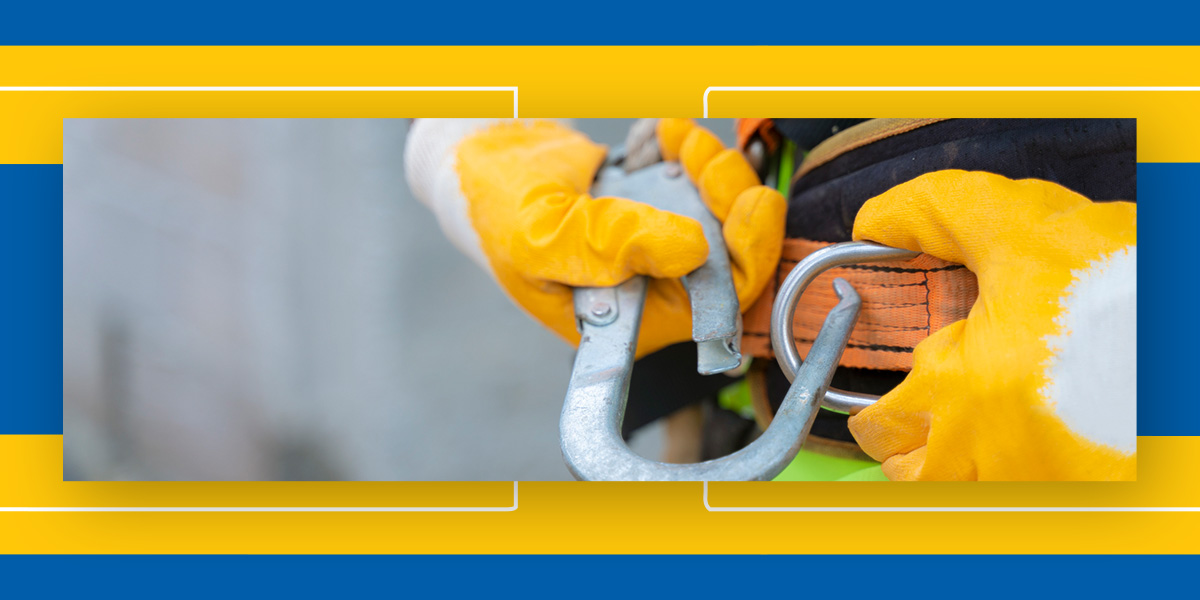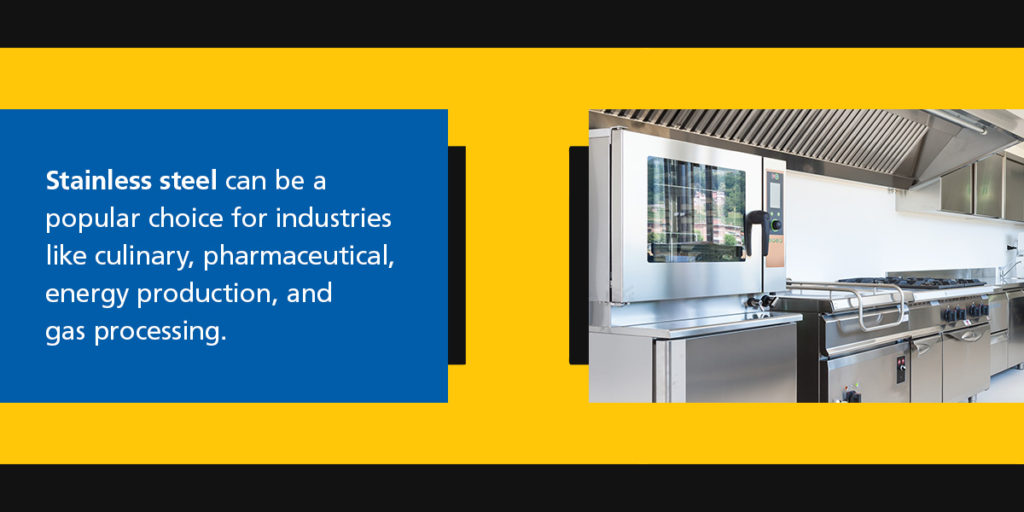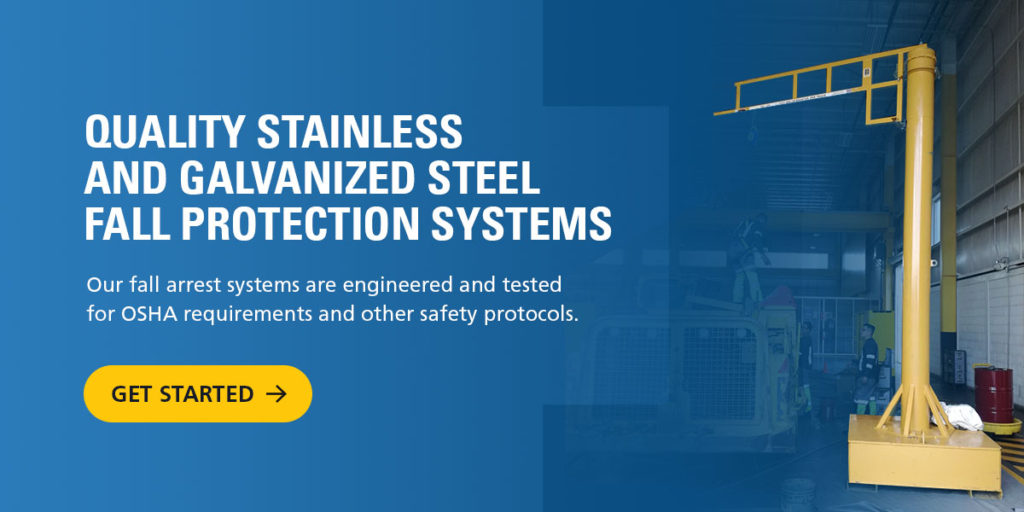
Stainless Steel vs. Galvanized Steel
July 20, 2017
This blog was originally posted on 7/20/17 and rewritten on 3/6/24.
Whether constructing high-rise buildings, working in manufacturing facilities, unloading grains, or repairing railcars, fall protection systems are essential to ensure a safer working environment.
However, when these systems aren’t manufactured with high-grade materials, they can be vulnerable to nature’s elements and compromise worker safety. That’s why galvanized and stainless steel are the trusted solutions for fall protection structures. These rigid, dependable, and wear-resistant materials offer the best defense against nature and optimal employee safety.
What Are the Differences Between Stainless and Galvanized Steel?
Understanding the differences between stainless and galvanized steel can help you choose the best option for your needs.
1. Manufacturing
Manufacturers produce galvanized steel using a process called hot dipping. It includes coating and reinforcing standard steel by dipping it into molten zinc. This layer of zinc serves as a protectant from corrosion. Unlike galvanized steel, stainless steel is an alloy of iron, chromium, and other corrosion-resistant minerals. Manufacturers melt and combine raw or recycled material layers in an electric arc furnace to produce stainless steel.
2. Design
Stainless steel has a smooth and clean finish, offering greater surface appeal and uniformity over galvanized steel. Galvanized steel provides little uniformity compared to stainless steel and often has a rough surface and texture. It can vary in color, like light and dark grays, and have matte finishes and spangled patterns.
3. Applications
Galvanized and stainless steel are popular choices for various industry applications. Industries like agriculture and construction use galvanized steel for multiple applications like building development, fencing land, and fall protection. Because of stainless steel’s polished finishes, it can be a popular choice for applications in industries like culinary and pharmaceutical, energy production, and gas processing.

4. Corrosion Resistance
Galvanized steel’s protective zinc layer reinforces the carbon steel, helping it repel rust from moisture, salt water, and acid in marine environments. While galvanized steel can withstand wear, the protective layer to protect the base material can corrode and fade over time, requiring more maintenance and upkeep.
The composition of materials in stainless steel can make it resistant to rust. Combining these elements creates a film that protects the outer steel layer from the elements to prevent corrosion and minimize wear. Compared to galvanized steel, stainless variants can require less maintenance.
5. Cost
Because stainless steel is made of a metal mixture that prevents corrosion, it can be more costly. Galvanized steel is a protective coating applied to carbon steel, which makes it more economical.
6. Strength
While galvanized and stainless steel are rigid and durable options, carbon steel is generally 40% stronger. Additional stainless steel components require more material to achieve the same strength as standard carbon steel.
FAQs About Stainless Steel vs. Galvanized Steel
Here are some answers to frequently asked questions about stainless steel and galvanized steel:
- Is galvanized steel the same as stainless steel? Galvanized steel differs from stainless steel in various ways, including manufacturing, design, and material compositions. Galvanized steel is carbon steel coated with a protective zinc layer to withstand the elements, while stainless steel is made with numerous corrosion-resistant alloys, including chromium and iron.
- Should you use stainless steel or galvanized steel for outdoor applications? Stainless and galvanized steel can be excellent choices for outdoor use. Stainless variants can withstand wear from nature for many years, and galvanized steel’s protectant layer makes it the best option over untreated carbon steel for outdoor worksites.
- Will galvanized or stainless steel rust? While galvanized steel can be rust-resistant, the protective zinc layer can wear over time with exposure to corrosive materials, requiring more maintenance. Stainless steel consists of a film-like barrier to repel corrosion and rust and maintain its surface appearance.
Quality Stainless and Galvanized Steel Fall Protection Systems
When it comes to fall protection, the most critical factor is safety. Whether you use stainless or galvanized steel systems, both options are durable, rigid, and corrosion-resistant to enhance fall protection and worker safety.
Our fall arrest systems are engineered and tested for OSHA requirements and other safety protocols. Whether for indoor or outdoor use, these systems can help ensure a safer work environment. Fill out an online form today to get started with Rigid Lifelines.

Categories
Share this post
Let us help you
Contact us today to find the perfect product fit for your job

